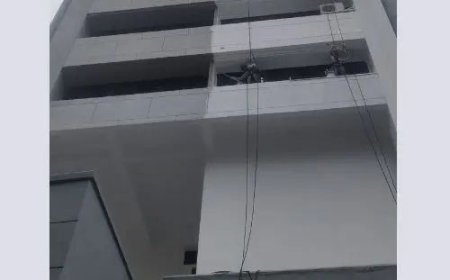How Can Bad SEO Be Turned Into Good SEO?
Negative SEO is the practice of using Black Hat SEO techniques to lower the ranks of another website rather than raise one's own.

Negative SEO is the practice of using Black Hat SEO techniques to lower the ranks of another website rather than raise one's own. This is frequently, though not always, the result of a disillusioned candidate. Even while the majority of people uphold moral principles and support one another, it is nonetheless possible to fall victim to such an attack. Contact theBest SEO Company in the USA,Quality Zone Infotech, if you also wish to increase leads, traffic, orders, etc. You will learn all you need to know about protecting your website and turning bad SEO into good SEO later on in this blog.
Nine Ways to Turn Your Bad SEO Into Good SEO
1. Utilize the GSC (Google Search Console).
Log into Google Search Control Center and set up your website for inspection if you haven't already. Set up email alerts so you can be notified in the unlikely event that Google finds any problems with your website. The control center will notify you of any problems with malware detection, ordering, server availability, or Google-imposed manual penalties. Combine this with Google Analytics to get a comprehensive view of how your website looks. Speak with Quality Zone Infotech, the top SEO firm in the United States.
2. Track the Speed of Your Website
One fundamental ranking factor is site speed. Utilize tools like Pingdom and PageSpeed Bits of Knowledge to assess how quickly your pages load. Keep in mind that 40% of users would abandon sites that take more than three seconds to open, and that users expect a page to load in about two seconds. Use crawl tools like Shouting Frog to identify any suspicious components if you think your site is experiencing stoppages and the cause is unclear. If the problem persists, consider using strong crawling, which can overburden server resources and cause your site to crash or dial back. In these situations, advise your webmaster or enabling supplier to similarly identify and fix the load's origin.
3. Examine Your Backlinks
One of the most common negative SEO attacks is creating a bad backlink profile. Although they are regrettably ineffective for Google's ranking algorithms, lower grade connections can be acquired efficiently and affordably. Use tools like Ahrefs, Lofty SEO, and Open Site Traveler to screen your backlinks, or automate the process with Screen Backlinks, which will notify you when new backlinks are added. If you see backlinks appearing out of the blue, take action by removing or repudiating them.
Make a list of all the backlinks you need to remove if this happens. Next, try to remove the connections by getting in touch with the webmaster. You can do this by using the contact form on the website, an email address that is listed there, or by finding contact details using the WHOIS information for the domain. You can disavow them to instruct Google to ignore them if you are unable to have them taken down. Make contact with the top SEO firm to improve both your on-page and off-page SEO.
4. Verify the Content for Duplicacy
To find instances of your website's content being replicated in other locations, use Copyscape. Store your information in a private library and thoroughly review new content before distributing it to prevent accidental duplication.
5. Monitor Clickthrough Rates for Keywords
You can spot odd increases in your clickthrough rates in Google Search Console that might be caused by bots who use clear-cut keywords to create false bounce rates. Top SEO company in USA If you come across such behavior, get in touch with Google and block the dangerous links.
6. Verify the Security of Your Website
Invest in full site security by using tools like WordPress's WordFence security module, which scans your data for malware. Additionally, the extraordinary version protects your website from spam attacks and restricts traffic from specific countries, explicit IPs, and unauthorized sign-in attempts.
The frequency of negative SEO attacks has increased, and they remain unparalleled. If your site's display is affected by such an attack, maintain your composure and take swift action to fix the problem. Inform Google of the situation and try appropriate actions, such as removing bad backlinks, requesting DMCA takedowns for content that has been scratched, or exposing fake reviews. Recovery is achievable.
7. Examine your GMB (Google My Business).
Although negative reviews are not always bad, an unanticipated flood of them can hurt your results. If you receive a number of unfavorable ratings without any advertising problems, it may indicate a malicious survey attack. Respond promptly by identifying fake reviews and screening reviews at different stages using social listening technologies. Contact the top internet marketing firm in Florida and Texas, USA, to learn more about GMB.
8. Remember that your best friend is GSC.
In case you haven't already, go in to Google Search Console and prepare your website for observation. Configure email alerts to notify you in the event that Google detects an issue with your website. You may find out from the Google Search Console whether:
- There are problems with the servers' availability.
- You can't file pages.
- Your website has been found to contain malware.
- Google has manually penalized your website. Using this nearby Google Analytics tool might help you
have a better look at the higher viewpoint of your website movement.
9. Check Everything Again Often
The speed of your website is an important ranking factor. To see how quickly your pages load, you can use a few tools such as Pingdom and PageSpeed Bits of Knowledge. Keep in mind that 40% of users would abandon websites that take more than three seconds to load, and 47% of users expect a page to load in two seconds or less.
If you think that restricted crawling is targeting your website, get in touch with your webmaster or facilitating organization for assistance in determining.
In conclusion
Even while negative SEO attacks are rare, they have become more frequent in recent years. In the unlikely event that your site's ranking drops because someone has vented their anger at you, try not to get too worked up about it. Because they can see you're not the one causing the crazy movement, the search engine bots are unlikely to penalize you. You can notify Google of the problem as soon as you see it and work to resolve it. In the unlikely event that backlinks are the problem, list the bad ones and block them.



































